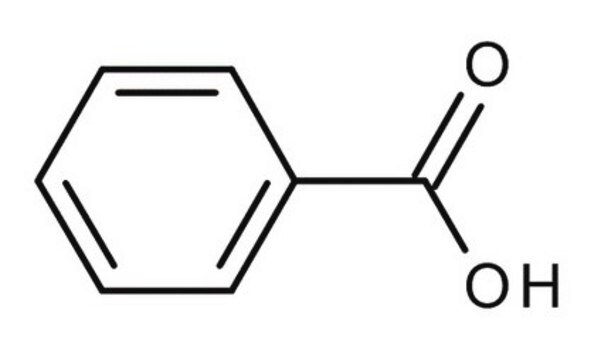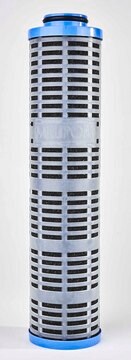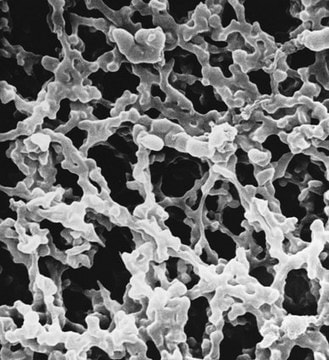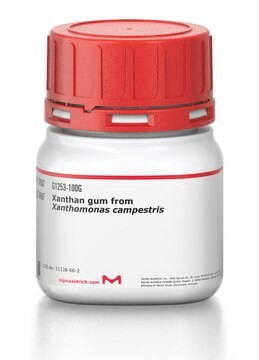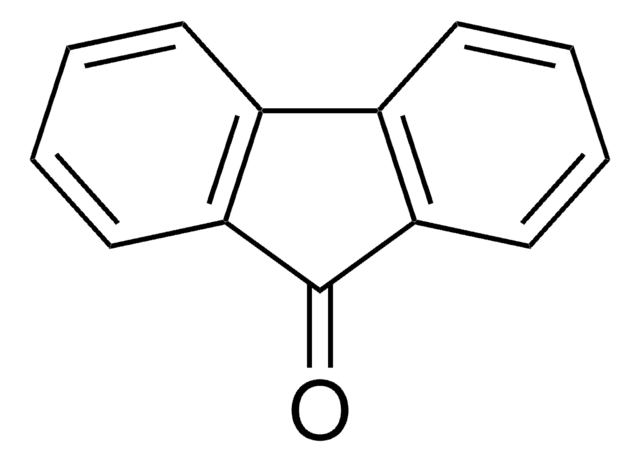W213101
Benzoic acid
≥99.5%, FCC, FG
Synonym(s):
Benzene carboxylic acid, Benzene formic acid, Diacylic acid, Phenylcarboxylic acid
About This Item
Halal
Kosher
Recommended Products
biological source
synthetic
Quality Level
grade
FG
Halal
Kosher
Agency
meets purity specifications of JECFA
reg. compliance
EU Regulation 1334/2008 & 178/2002
FCC
FDA 21 CFR 117
FDA 21 CFR 184.1021
vapor density
4.21 (vs air)
vapor pressure
10 mmHg ( 132 °C)
Assay
≥99.5%
form
powder or crystals
autoignition temp.
1061 °F
packaging
poly drum of 10, 25 kg
poly bottle of 1 kg
bp
132-133 °C/10 mmHg
249 °C (lit.)
mp
121-125 °C (lit.)
solubility
soluble, clear, colorless (95% ethanol, 1gm/3mL)
density
1.32 g/cm3 at 20 °C
cation traces
As: ≤3 ppm
Cd: ≤1 ppm
Hg: ≤1 ppm
Pb: ≤2 ppm
application(s)
flavors and fragrances
Documentation
see Safety & Documentation for available documents
food allergen
no known allergens
Organoleptic
balsam
SMILES string
OC(=O)c1ccccc1
InChI
1S/C7H6O2/c8-7(9)6-4-2-1-3-5-6/h1-5H,(H,8,9)
InChI key
WPYMKLBDIGXBTP-UHFFFAOYSA-N
Looking for similar products? Visit Product Comparison Guide
Related Categories
General description
Application
- Photochemical Aerobic Upcycling of Polystyrene Plastics.: Benzoic acid is utilized in a novel photocatalytic process for the upcycling of polystyrene plastics. This study showcases its application in sustainable chemistry, focusing on the efficient breakdown and recycling of polymer materials (Skolia et al., 2024).
Disclaimer
Signal Word
Danger
Hazard Statements
Precautionary Statements
Hazard Classifications
Eye Dam. 1 - Skin Irrit. 2 - STOT RE 1 Inhalation
Target Organs
Lungs
Storage Class Code
6.1C - Combustible acute toxic Cat.3 / toxic compounds or compounds which causing chronic effects
WGK
WGK 1
Flash Point(F)
Not applicable
Flash Point(C)
Not applicable
Personal Protective Equipment
Choose from one of the most recent versions:
Already Own This Product?
Find documentation for the products that you have recently purchased in the Document Library.
Customers Also Viewed
Global Trade Item Number
| SKU | GTIN |
|---|---|
| W213101-1KG-K | 4061835565184 |
| W213101-10KG-K | 4061837502651 |
| W213101-25KG-K | 4061834403708 |
| W213101-SAMPLE-K | 4061834354918 |
Our team of scientists has experience in all areas of research including Life Science, Material Science, Chemical Synthesis, Chromatography, Analytical and many others.
Contact Technical Service